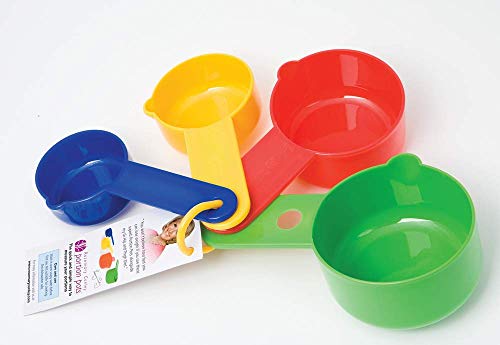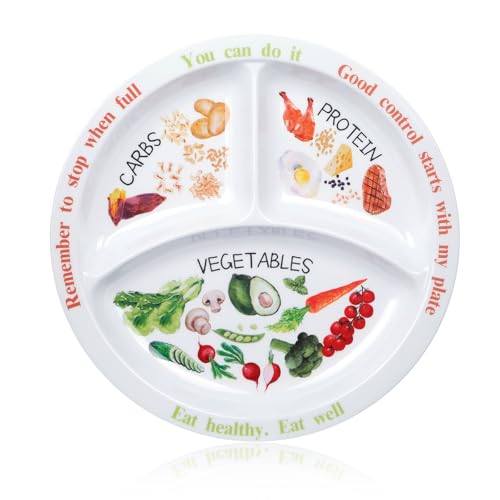To control your weight, you need to pay close attention to portion sizes, not just choosing a healthy mix of foods.
We overeat to the tune of 500 calories or so each day – but where do these extra calories come from? Over-consumption of fast food and fizzy drinks is the answer, as well as overly large portion sizes.
It’s little wonder there is an obesity crisis right now, and restricting our portion sizes is one of the ways to address the problem of overeating.
It is important to remember that every person is different. What might feel like a small portion of food to someone else could feel very large to you. Listen to your body. If you feel like a portion size is too big, then it most likely is.
Don’t be confused about serving sizes and portion sizes either. The serving size listed on a packet of food can vary considerably, and doesn’t always match up to your portion size, which is how much food you choose to eat at a time. You don’t have to follow the serving size suggestion if you don’t agree with it.
The Nutrition Facts label on food products lists the amount of fat, protein, carbs, calories, salt, fibre and more that is contained in the packet. You can use this to determine how much food from the packet you class as being one portion.
Once you are eating realistic portions, you will be able to enjoy your favourite foods without feeling so guilty, and be able to maintain a healthy weight. Here are five tips which will help you to get control of the portions you eat.
| # | Preview | Product | Price | |
|---|---|---|---|---|
| 1 |

|
Rosemary Conley Portion Pots 4 Piece Set of Measuring Cups for Weight Control by Healthy Eating Diet... | £8.49 | Buy on Amazon |
1. Measure your servings
Should you wish to know the quantities you are eating, bring out the weighing scales. For example, pour out your typical bowl of breakfast cereal, and then measure the amount you have put in the bowl.
Compare the amount you have poured into the bowel with the amount per serving listed on the cereal box. Pouring too much? Adjust the amount you have placed in your bowl accordingly.
You can do this for everything you eat, and then you will get an idea of exactly what changes you need to introduce to control your portion sizes better.
2. Buy calorie-apportioned foods
So, you have several new snacks which are portioned at 100-calories per snack. There is no need to work out the precise number of biscuits per serving. You can scoff the entire bag and feel chuffed as you have only eaten a single serving. Sounds great, right? It can be very useful to do this.
You are able to achieve the same thing should you prefer to buy in bulk by pre-portioning your food into single serving-size bags. This may take some time, although it is worth it in the long-term.
3. Take your time eating
You will feel fuller if you take your time when you eat. Relax, and chew your food slowly. Put your cutlery down between bites, and do not pick them up again until you have swallowed the previous bit of food.
Rushing through your meal makes it feel less filling, and you are more likely to give yourself second servings, or snack on something else, when you aren’t actually hungry – it takes a bit of time for your body to realise it’s full. Eating slower will mean your body notices it is being filled, so by the time you finish the meal, you will not feel hungry anymore, and so won’t overeat.
| # | Preview | Product | Price | |
|---|---|---|---|---|
| 1 |

|
Food Portion Sizes | £11.00 £5.08 | Buy on Amazon |
4. Reduce the size of your plates and bowls
Did you know that your average dinner plate used to be 10 inches in diameter 30 years ago and, in most cases now, it is 12 inches? When you measure food portions, measure your plates and bowls. If they are too big, buy some smaller plates to reduce the expanding portions.
Suggested sizes:
- 10-inch dinner plate
- 8-inch lunch plate
- 5.5-ounce cereal or soup bowl
- 6.5-ounce drinking glass
Diet.co.uk recommend the ‘Diet Plate’ – a specialised diet tool which has statistically calibrated partitions to corresponding food groups, showing the user exactly how much of each food group they should be consuming at meal times.
5. Use your hands
It is not always possible to measure what you are about to eat. However, your hands are readily available at all times. You can use these comparisons to guess portion sizes when you’re eating out or at a friend’s house:
- A woman’s fist is equivalent to a serving of fruit or veg
- A rounded handful is equivalent of a serving of raw or cooked veg, half a portion of cooked rice or pasta, and a good serving of crisps
- The palm of your hand is equivalent to three ounces of meat, chicken or fish
- A tennis ball is equivalent to a portion of ice cream, pasta, potato or rice
- A CD is the equivalent to a serving of pancake or waffle
- A thumb tip is equivalent to a teaspoon of butter, margarine or peanut butter
- Four cubes equate to an ounce of cheese
| # | Preview | Product | Price | |
|---|---|---|---|---|
| 1 |

|
Yuecda Portion Control Plate for Balanced Eating -Healthy Nutrition Plate for Adults and Teens -... | £10.99 | Buy on Amazon |




